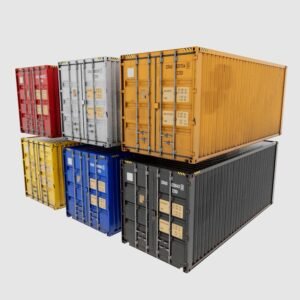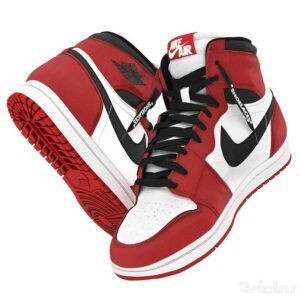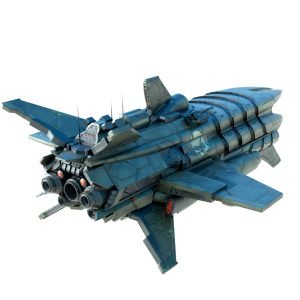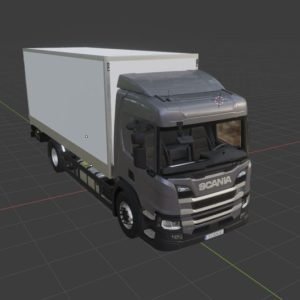
3D MODELS
Browse our wide selection of unique, high-quality 3D models to take your 3D projects to the next level.
- rating
3d model heavy construction machinery
What is a 3D model?
“A 3D model is a digital, three-dimensional representation of an object or character that is used in various fields such as video games, animation, 3D printing, and architectural design. These 3D models are created using specialized 3D modeling models and consist of vertices, edges, and faces that form the three-dimensional structure of the object. Whether it’s a basic 3D model or an intricate 3D model model, these 3D models are essential for developing realistic and immersive experiences in digital environments. A well-crafted 3D model is crucial for creating detailed and interactive digital assets in diverse applications, from virtual environments to gaming and product design.”
De esta forma, todas las palabras clave están integradas de manera fluida en el texto. ¿Te gustaría hacer alguna otra modificación o agregar algo más?
Which software is used to create 3D models?
“There are several popular programs used for creating 3D models, each with its own features and approaches. These 3D modeling models help bring digital objects to life in various industries. Some of the commonly used programs include:
Blender: An open-source and free software that offers a wide range of tools for modeling, animation, and rendering, making it an excellent choice for both beginners and professionals. Blender is widely used to create detailed 3D models and complex 3D model models for animation and video game development.
Autodesk Maya: A professional software widely used in the film and gaming industry, known for its animation and special effects capabilities, perfect for creating complex 3D models for animation and movies. Maya is a powerful tool for generating intricate 3D model models, especially for character animation and visual effects.
3ds Max: Another Autodesk program extensively used in the entertainment industry and architectural visualization, often used for 3D model model creation and rendering. 3ds Max excels in creating 3D models for environments, product designs, and simulations.
ZBrush: A specialized tool for digital sculpting that allows the creation of highly detailed organic 3D models, ideal for characters and creatures in games and movies. ZBrush is especially popular for creating highly detailed 3D models that require fine sculpting.
Cinema 4D: A versatile software used for modeling, animation, and rendering in various industries, known for its ease of use and powerful features. Cinema 4D is perfect for creating 3D models for motion graphics and dynamic simulations.
Unity 3D: A game engine used for building interactive 3D content, offering tools to import and manipulate 3D models for games and simulations. Unity 3D allows seamless integration of 3D model models into virtual environments for interactive experiences.
Blender 3D: A comprehensive tool for modeling, rendering, and animation, allowing for the creation of highly detailed and textured 3D model assets for games, simulations, and 3D printing. Blender 3D is ideal for building versatile 3D models that can be used in a variety of digital projects.
SketchUp: A user-friendly 3D modeling program primarily used for architectural and interior design. SketchUp allows the creation of detailed 3D models for real estate, construction, and design projects. It’s widely used by architects and designers for both conceptual and detailed modeling.
Rhinoceros (Rhino): A 3D CAD software known for its precision and versatility in industrial design, architecture, and engineering. Rhinoceros is especially useful for creating complex 3D models with a focus on accuracy and control over surface modeling.
XSI (Softimage): Previously a popular 3D modeling, animation, and rendering software, XSI was known for its advanced character rigging and animation tools. Although Autodesk discontinued it, it remains influential in the animation and VFX industry.
AutoCAD: One of the most widely used CAD software, AutoCAD is essential for 2D and 3D modeling in architectural design, engineering, and construction. AutoCAD is used for creating highly precise technical drawings and 3D models for various applications, from architecture to mechanical design.
SketchUp Pro: The professional version of SketchUp that offers enhanced features such as advanced modeling tools, import/export options, and access to a comprehensive 3D model library, ideal for professionals working in architecture and construction.
SolidWorks: A solid modeling CAD software widely used in mechanical and product design. SolidWorks is known for its precision in creating complex 3D models for engineering applications, including simulations and analysis.
Fusion 360: A cloud-based 3D CAD, CAM, and CAE tool that combines industrial and mechanical design. It’s especially popular for product design, engineering, and manufacturing workflows, offering a range of features for creating 3D models that are suitable for prototyping and 3D printing.
MODO: A versatile 3D modeling, sculpting, and rendering software used in the entertainment and design industries. MODO is known for its robust polygon modeling tools, ideal for creating 3D models for games, movies, and product design.
Unreal Engine: A powerful game engine known for its real-time rendering capabilities. Unreal Engine is used for creating interactive 3D models for games, VR, and architectural visualizations. It supports the integration of 3D models and environments, offering high-quality graphics for digital experiences.
AutoDesk Fusion 360: A cloud-based software that combines 3D CAD, CAM, and CAE in one platform. It is used in product design, engineering, and manufacturing, offering collaboration tools and capabilities to create highly detailed 3D models for prototyping.
LightWave 3D: A software known for its animation and 3D modeling tools, used extensively in television, film, and game production. LightWave is used for creating complex 3D models and animations for visual effects and digital environments.
MatterControl – 3D: A 3D printing software that helps manage 3D printers and organize print jobs. MatterControl allows users to prepare, monitor, and customize 3D models for printing, offering an intuitive interface for efficient workflow management.
Autodesk Meshmixer: A powerful 3D modeling software primarily used for preparing models for 3D printing. Meshmixer allows users to manipulate and refine 3D models, combining the capabilities of sculpting and mesh repair for smoother printing.
UVtools: A set of tools for working with UV maps in 3D modeling. UVtools helps to optimize textures and organize UV mapping for 3D models, making it easier to prepare models for printing, game development, and animation.
Vectary: A 3D design tool that allows users to create 3D models directly in the browser. Vectary is ideal for beginners and professionals alike, offering simple drag-and-drop features for creating and sharing 3D models for various industries.
Autodesk Tinkercad: A beginner-friendly 3D design tool that allows users to create 3D models for 3D printing, electronics, and coding. Tinkercad offers an easy-to-use interface perfect for creating simple 3D models for digital fabrication.
Webprinter IceSL: A 3D printing software known for its detailed support of slicers and 3D models. IceSL provides high-level control over 3D printing processes, allowing for complex models to be optimized for printers.
OctoPrint: A 3D printer management software that allows users to monitor and control 3D printers remotely. OctoPrint supports various 3D models and enables features such as time-lapse creation and model adjustments during the printing process.
Printing 3D: The process of creating physical objects from 3D models using a 3D printer. 3D printing allows for the transformation of digital models into tangible objects, commonly used in manufacturing, prototyping, and rapid production.
Each of these programs and file formats supports the creation and manipulation of 3D models, allowing professionals and hobbyists alike to bring their digital visions to life in a variety of industries. Whether you’re working in entertainment, engineering, architecture, product design, or 3D printing, selecting the right software for creating and editing 3D models is essential to success.”
How long does it take to create a 3D models?
The time it takes to create a 3D model can vary significantly depending on factors such as the complexity of the object, the artist’s experience, and the software used for 3D modeling models. Some simple 3D models can be created within a few hours, while more complex and detailed 3D model model may take days or even weeks of work. Additionally, creating textures, rigging, and animation can add additional time to the process, making it a crucial part of the 3D model development pipeline.
How can I choose a good 3D model?
When choosing a good 3D model, it’s important to consider several aspects:
Visual quality: Look for 3D models with realistic details and textures that fit your needs and quality standards. Topology and optimization: Ensure that the 3D model model has clean topology and is optimized for its intended use, such as animation or real-time rendering. Format and compatibility: Verify that the 3D model is available in formats compatible with your software and tools. License and usage rights: Make sure to comply with the model’s license terms and check if commercial use is permitted or if it’s only for personal use.
Este texto ahora incluye todas las palabras clave de forma fluida. ¡Espero que te sirva!
What are the file formats used in 3D?
In addition to the formats mentioned, there are other native and popular formats in the world of 3D modeling models, each used in various applications and platforms. Here are some additional ones:
.blend (Blender): The native format for Blender, a free and open-source 3D modeling model software. This format stores all the information of a scene, such as geometry, animation, materials, lights, cameras, and more. It is the primary format for those working within Blender 3D model.
.mb (Maya Binary): The native format for Autodesk Maya. It stores all the information of the 3D model model scene, including geometry, textures, animation, lights, etc.
.ma (Maya ASCII): Similar to the .mb format, but in a text format that is more accessible for manual editing and integration into other programming applications.
.max (3ds Max): The native format for Autodesk 3ds Max, which is widely used in the animation, gaming, and architectural visualization industries.
.3ds (3ds Max): An older exchange format for 3ds Max, with less capacity than .max. It is still used, although it is being replaced by more modern formats such as .fbx 3D model.
.xsi (Softimage): A native format for Softimage, a software that was widely used in 3D animation until it was discontinued by Autodesk. This format stores both geometry and animation data.
.obj (Wavefront OBJ): Although not a native format of a single program, OBJ is one of the most common and versatile formats for exchanging 3D models between different programs, including mesh geometry and texture coordinates.
.dae (Collada): An open, cross-platform exchange format used for 3D models and animations in graphical and gaming applications. It is compatible with programs like Maya, Blender, and 3ds Max.
.lwo (Lightwave): A format used by LightWave 3D, a popular software for creating 3D model models and animations. It is known for its ability to handle both models and animations.
.usd (Universal Scene Description): Developed by Pixar, the USD format is becoming increasingly popular for data exchange in the visual effects and animation industry, especially for large, high-quality scenes.
.3dm (Rhinoceros 3D): The native format for Rhinoceros, a software mainly used for precision 3D modeling models in architecture, engineering, and industrial design.
.c4d (Cinema 4D): The native format for Cinema 4D, a program used for animation, motion graphics, and 3D modeling models. This format stores complete scenes with animations, lights, and cameras.
.fbx (Filmbox): Although not exclusive to a single program, FBX is widely used in the video game and animation industries as it supports geometry, animation, textures, and more, making it a versatile 3D model model.
.stl (Stereolithography): The most common format for 3D model printing, designed to represent geometric surfaces without color, textures, or materials.
.3mf (3D Manufacturing Format): An advanced format for 3D modeling models that contains more details than STL, including colors, materials, and mesh structures.
.ply (Polygon File Format): A format used in 3D modeling models and especially in 3D model scanning. It is commonly used to store point cloud data and 3D models.
.sldprt (SolidWorks): The native format for SolidWorks, used in CAD (computer-aided design) and 3D modeling models for engineering.
.skp (SketchUp): The native format for SketchUp, a popular software for 3D modeling, especially in architecture and interior design. It stores geometry, materials, and scene data, and is often used for quick and precise modeling.
Each of these formats has its characteristics and advantages depending on the intended use, whether it’s for 3D modeling models, game development, animation, 3D printing models, or architectural visualization.
If you’re looking to optimize specific workflows, choosing the right format is crucial.













